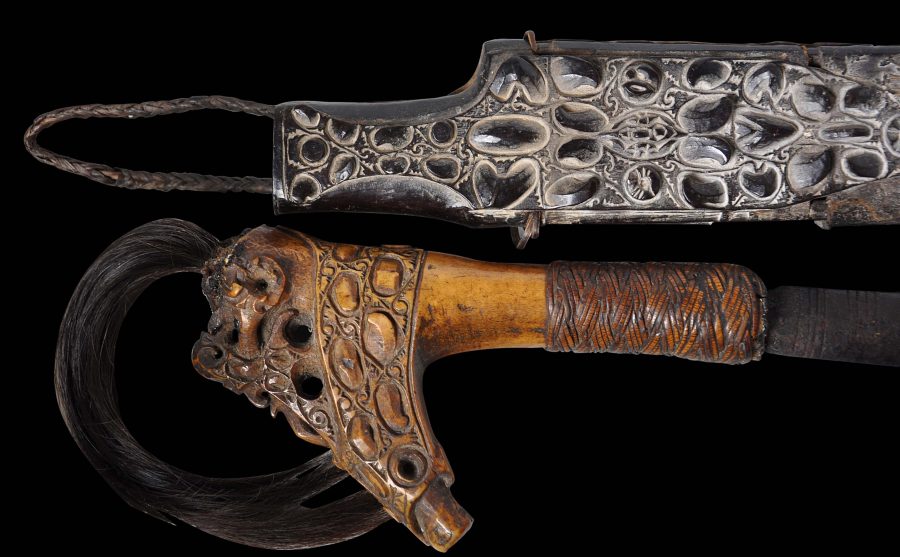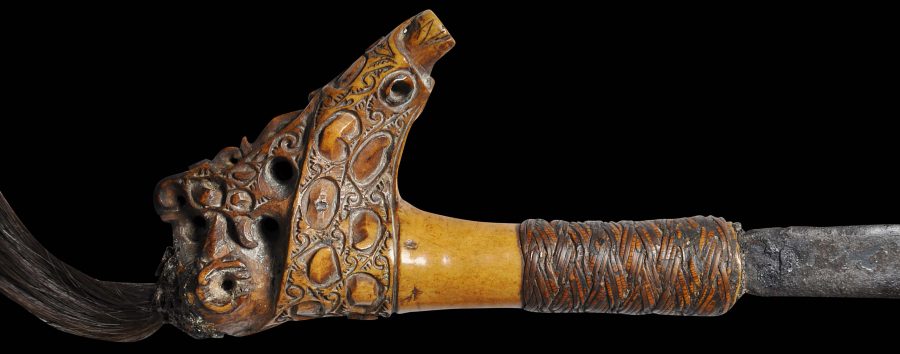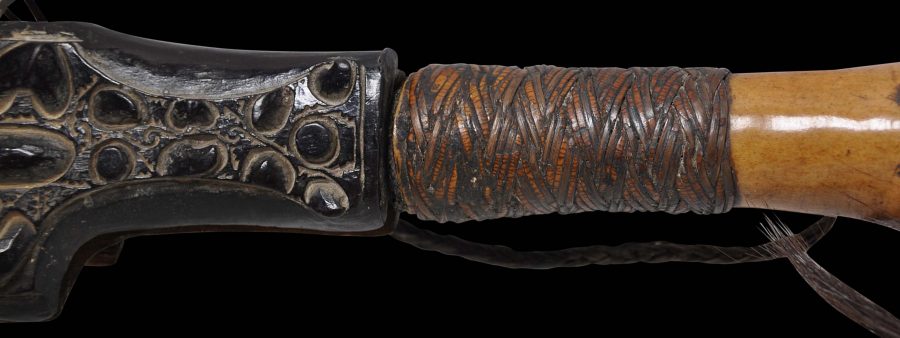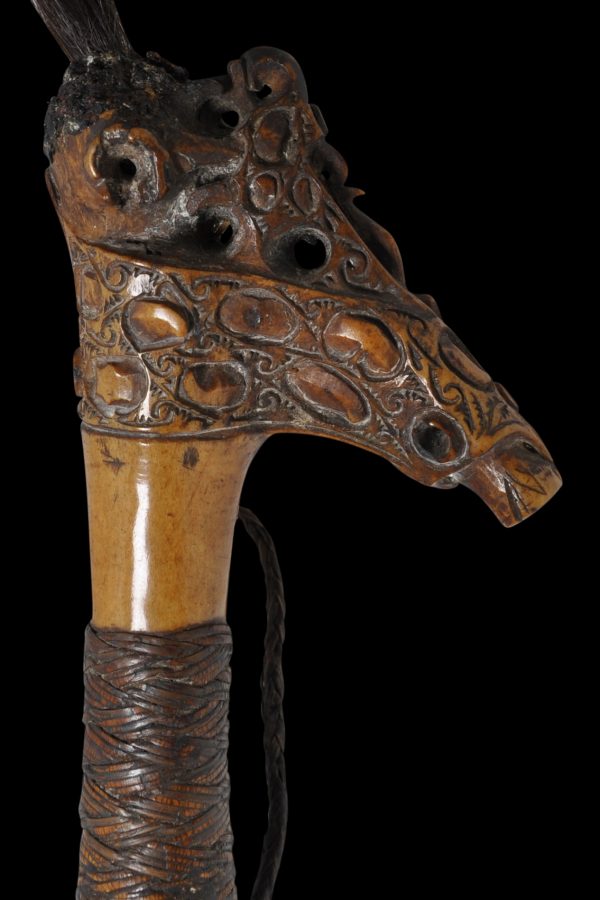This machete-like mandau Dayak sword is notable for its excellent patina, and its unusual carved scabbard. It is an unusual excellent example that clearly dates to the nineteenth century.
It is from the Dayak people and from the Iban sub-group, and most particularly from the Iban of the Saribas region of Sarawak on the Malaysian part of Borneo island. In the past, the Ibans were known as the Sea Dayaks. The Ibans were renowned for their headhunting.
The hilt is made of carved deer horn. According to Heppell (2005, p. 125) the carving is based on scrolls and leech motifs. The leech (lemetek) is associated with blood sucking and so was considered an appropriate motif for a weapon.
A tuft of hair issues from the hilt – it is long and black and probably human.
The leech theme continues on the scabbard. It is carved on the front side all the way down with multiple leech motifs, all in high relief. It is this scabbard which marks this mandau out as unusual. The leeches rise from the surface of finely carved scrolling ‘bamboo’ motifs.
The woven or plaited dark brown fibre of the gleichenia linearis fern has been used to lash the hilt to the blade which constitutes the grip, and to make straps to keep the wooden casing of the scabbard together. The plaiting is fine and has a very dark patina – the age is particularly evident.
The blade is of hardened iron. It has a slight curve and is single edged. It is relatively plain although has decorative notches along its length.
Overall, this is a fine, unusual example, and almost certainly has been in the UK since the colonial era. There are some losses to the scabbard in terms of some probable loss to the rattan binding. There might also have been some applied hair that is now missing – but such losses are typical.
A similar example with a ‘leech’ scabbard is illustrated in Heppell (2005, p. 129).
References
Heppell, M., et al, Iban Art: Sexual Selection and Severed Heads, C. Zwartenkot/Kit Publishers, 2005.
Sellato, B. (ed.), Plaited Arts from the Borneo Rainforest, NIAS Press, 2012.
Van Zonneveld, A., Traditional Weapons of the Indonesian Archipelago, C. Zwartenkot Art Books, 2001.











